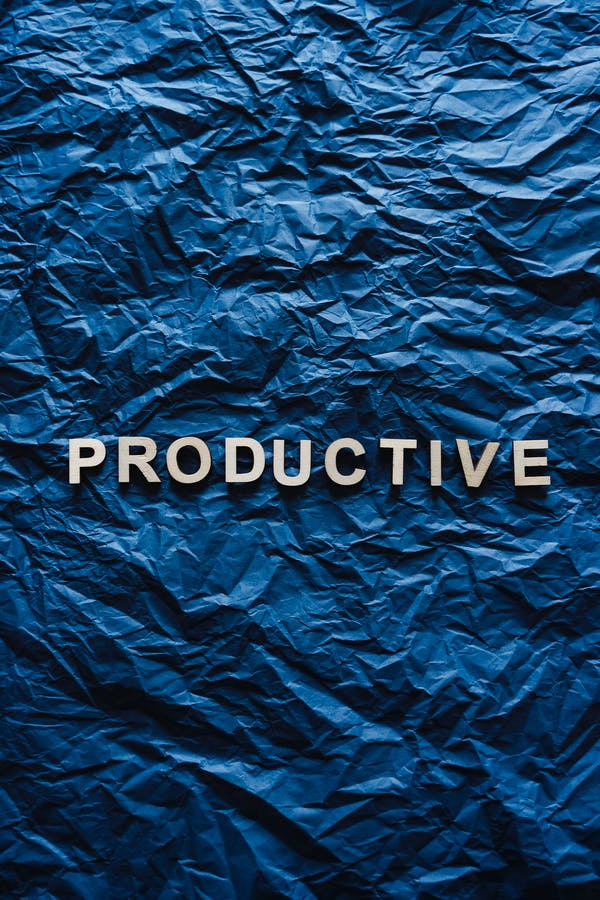
“It’s great to be productive. It really is. But sometimes, we chase productivity so much that it makes us, well, unproductive. It’s easy to read a lot about how to be more productive, but don’t forget that you have to make that time up.”
Matt Cutts wrote that back in 2013 — “Today, search for ‘productivity’ and Google will come back with about 663,000,000 results. If you decide to go down this rabbit hole, you’ll be bombarded by a seemingly endless amount of content. I’m talking about books, blogs, videos, apps, podcasts, scientific studies, and subreddits all dedicated to productivity.”
Like so many other people, I’ve also fallen into this trap. For years I’ve been on the lookout for trends and hacks that will help me work faster and more efficiently — and also trends that help me help others to be faster. I’ve experimented with various strategies and tools. And, while some of these strategies and solutions have been extremely useful — without parsing out what you need quickly — it’s counterproductive.
Sometimes you end up spending more time focusing on how to be productive instead of actually being productive.
“The most productive people I know don’t read these books, they don’t watch these videos, they don’t try a new app every month,” James Bedell wrote in a Medium post. “They are far too busy getting things done to read about Getting Things Done.”
This is my mantra:
I proudly say, “I am addicted to productivity — I want to be addicted to productivity — productivity is my life and my mission — and I also want to find the best way to lead others through productivity to their best selves.
But most of the time productivity means putting your head down and working until the job’s done.” –John Rampton
Addiction to Productivity is Real
Dr. Sandra Chapman, director of the University of Texas at Dallas Center for BrainHealth points out that the brain can get addicted to productivity just as it can to more common sources of addiction, such as drugs, gambling, eating, and shopping.
“A person might crave the recognition their work gives them or the salary increases they get,” Chapman told the BBC. “The problem is that just like all addictions, over time, a person needs more and more to be satisfied, and then it starts to work against you. Withdrawal symptoms include increased anxiety, depression, and fear.”
Despite the harmful consequences, addiction is considered by some experts as a brain disease that affects the brain’s reward system and ends in compulsive behavior. Regardless, society tends to reward productivity — or at least to treat it positively. As a result, this makes the problem even worse.
“It’s seen like a good thing: the more you work, the better,” adds Chapman. “Many people don’t realize the harm it causes until a divorce occurs and a family is broken apart, or the toll it takes on mental health.”
Because of the occasional negative issues with productivity, it’s no surprise that it is considered a “mixed-blessing addiction.”
“A workaholic might be earning a lot of money, just as an exercise addict is very fit,” explains Dr. Mark Griffiths, distinguished professor of behavioral addiction at Nottingham Trent University. “But the thing about any addiction is that in the long run, the detrimental effects outweigh any short-term benefits.”
“There may be an initial period where the individual who is developing a work addiction is more productive than someone who isn’t addicted to work, but it will get to a point when they are no longer productive, and their health and relationships are affected,” Griffiths writes in Psychology Today. “It could be after one year or more, but if the individual doesn’t do anything about it, they could end up having serious health consequences.”
“For instance, I speculated that the consequences of work addiction may be reclassified as something else: If someone ends up dying of a work-related heart attack, it isn’t necessarily seen as having anything to do with an addiction per se – it might be attributed to something like burnout,” he adds.
There Are Three “Distinct Extreme Productivity Types
Cyril Peupion, a Sydney-based productivity expert, has observed extreme productivity among clients at both large and medium-sized companies. “Most people who come to me are high performers and very successful. But often, the word they use to describe their work style is ‘unsustainable,’ and they need help getting it back on track.”
By changing their work habits, Peupion assists teams and individuals improve their performance and ensure that their efforts are aligned with the overarching strategy of the business, rather than focusing on work as a means to an end. He has distinguished three types of extreme productivity in his classification: efficiency obsessive, selfishly productive, and quantity-obsessed.
- Efficiency obsessive. “Their desks are super tidy and their pens are probably color-coded. They are the master of ‘inbox zero.’ But they have lost sight of the big picture, and don’t know the difference between efficiency and effectiveness.”
- Selfishly productive. “They are so focused on their own world that if they are asked to do something outside of it, they aren’t interested. They do have the big picture in mind, but the picture is too much about them.”
- Quantity-obsessed. “They think; ‘The more emails I respond to, the more meetings I attend, the more tasks I do, the higher my performance.’ As a result, they face a real risk of burnout.”
Peupion believes that “quantity obsessed” individuals are the most common type “because there is a pervasive belief that ‘more’ means ‘better’ at work.”
The Warning Signs of Productivity Addiction
Here are a few questions you should ask yourself if you think you may be succumbing to productivity addiction. After all, most of us aren’t aware of this until it’s too late.
- Can you tell when you’re “wasting” time? If so, have you ever felt guilty about it?
- Does technology play a big part in optimizing your time management?
- Do you talk about how busy you are most of the time? In your opinion, is hustling better than doing less?
- What is your relationship with your email inbox? Are you constantly checking it or experience phantom notifications?
- When you only check one item off your list, do you feel guilty?
- Does stress from work interfere with your sleep?
- Have you been putting things off, like a vacation or side project, because you’re “too swamped?
The first step toward turning around your productivity obsession is to recognize it. If you answered “yes” to any of the above questions, then it’s time to make a plan to overcome your addiction to productivity.
Overcoming Your Productivity Addiction
Thankfully, there are ways to curb your productivity addiction. And, here are 9 such ways to achieve that goal.
1. Set limits.
Just because you’re hooked on productivity doesn’t mean you have to completely abstain from it. Instead, you need to establish boundaries.
For example, there are a lot of amazing productivity podcasts out there. But, that doesn’t mean you have to listen to them all in the course of a day. Instead, you could listen to one or two podcasts, like The Productivity Podcast or Before Breakfast, during your commute. And, that would be your only time of the day to get your productivity fix.
2. Create a not-to-do list.
Essentially, the idea of a not-to-do list is to eliminate the need to practice self-discipline. Getting rid of low-value tasks and bad habits will allow you to focus on what you really want to do as opposed to weighing the pros and cons or declining time requests. More importantly, this prevents you from feeling guilty about not crossing everything off an unrealistic to-do list.
3. Be vulnerable.
By this, I mean admitting where you could improve. For example, if you’re new to remote work and are struggling with this, you would only focus on topics in this area. Suggestions would be how to create a workspace at home, not getting distracted when the kids aren’t in school, or improving remote communication and collaboration with others.
4. Understand why you procrastinate.
Often, we procrastinate to minimize negative emotions like boredom or stress. Other times it could be because it’s a learned trait, underestimating how long it takes you to complete something or having a bias towards a task.
Regardless of the exact reason, we end up doing busy work, scrolling social media, or just watching one more episode of our favorite TV series. And, even though we know that it’s not for the best, we do things that make us feel better than the work we should do to restore our mood.
There are a lot of ways to overcome procrastination. But, the first step is to be aware of it so that you can take action. For example, if you’re dreading a difficult task, don’t just watch Netflix. Instead, procrastinate more efficiently,y like returning a phone call or working on a client pitch.
5. Don’t be a copycat.
Let’s keep this short and sweet. When you find a productivity app or technique that works for you, stick with it.
That’s not to say that you can’t make adjustments along the way or try new tools or hacks. However, the main takeaway should be that just because someone swears by the Pomodoro Technique doesn’t mean it’s a good fit for you.
6. Say yes to less.
Across the board, your philosophy should be less is more.
That means only download the apps you actually use and want to keep (after you try them out) and uninstall the ones you don’t use. For example, are you currently reading a book on productivity? Don’t buy your next book until you’ve finished the one you’re currently reading (or permit yourself to toss a book that isn’t doing you any good). — and if you really want to finish a book more quickly, listen to the book on your way to work and back.
Already have plans this weekend? Don’t commit to a birthday party. And, if you’re day is booked, decline that last-minute meeting request.
7. Stop focusing on what’s next.
“In the age when purchasing a thing from overseas is just one click and talking to another person is one swipe right, acquiring new objects or experiences can be addictive like anything else,” writes Patrick Banks for Lifehack.
“That doesn’t need to be you,” he adds. “You can stop your addition to ‘the next thing’ starting today.” After all, “there will always be this next thing if you don’t make a conscious decision to get your life back together and be the one in charge.”
- Think about your current lifestyle and the person you’re at this stage to help you identify what you aren’t satisfied with.
- By setting clear goals for yourself in the future, you will be able to overcome your addiction.
- Establish realistic goals.
- To combat addiction, you must be aware of what is going on around you, as well as inside your head, at any given time.
- Don’t spend time with people who have unhealthy behaviors.
- Hold yourself accountable.
- Keep a journal and write out what you want to overcome.
- Appreciate no longer being addicted to what’s next.
8. Simplify.
Each day, pick one priority task. That’s it. As long as you concentrate on one task at a time, you will be less likely to get distracted or overwhelmed by an endless list of tasks. A simple mantra to live by is: work smarter, not harder.
The same is also accurate with productivity hacks and tools. Bullet journaling is a great example. Unfortunately, for many, a bullet journal is way more time-consuming and overwhelming than a traditional planner.
9. Learn how to relax.
“Sure, we need to produce sometimes, especially if we have to pay the bills, but, banning obsession with productivity is unhealthy,” writes Leo Babauta. “When you can’t get yourself to be productive, relax.” Don’t worry about being hyper-efficient. And, don’t beat yourself up about having fun.
“But what if you can’t motivate yourself … ever?” he asks. “Sure, that can be a problem. But if you relax and enjoy yourself, you’ll be happier.”
“And if you work when you get excited, on things you’re excited about, and create amazing things, that’s motivation,” Leo states. “Not forcing yourself to work when you don’t want to, on things you don’t want to work on — motivation is doing things you love when you get excited.”
But, how exactly can you relax? Here are some tips from Leo;
- Spend 5 minutes walking outside and breathe in the fresh air.
- Give yourself more time to accomplish things. Less rushing means less stress.
- If you can, get outside after work to enjoy nature.
- Play like a child. Even better? Play with your kids. And, have fun at work — maybe give gamification a try.
- Take the day off, rest, and do something non-work-related.
- Allow yourself an hour of time off. Try not to be productive during that time. Just relax.
- You should work with someone who is exciting. Make your project exciting.
- Don’t work in the evenings. Seriously.
- Visit a massage therapist.
- Just breathe.
“Step by step, learn to relax,” he suggests. “Learn that productivity isn’t everything.” For that statement, sorry Leo, I say productivity isn’t everything — it’s the only thing.” However, if you can’t cut loose, relax, do fun things, and do the living part of your life — you’ll crack in a big way — you really will.
It’s great to create and push forward — just remember it doesn’t mean that every minute must be spent working or obsessing over productivity issues. Instead, invest your time in meaningful, high-impact work, get into it, focus, put in big time and then relax.









